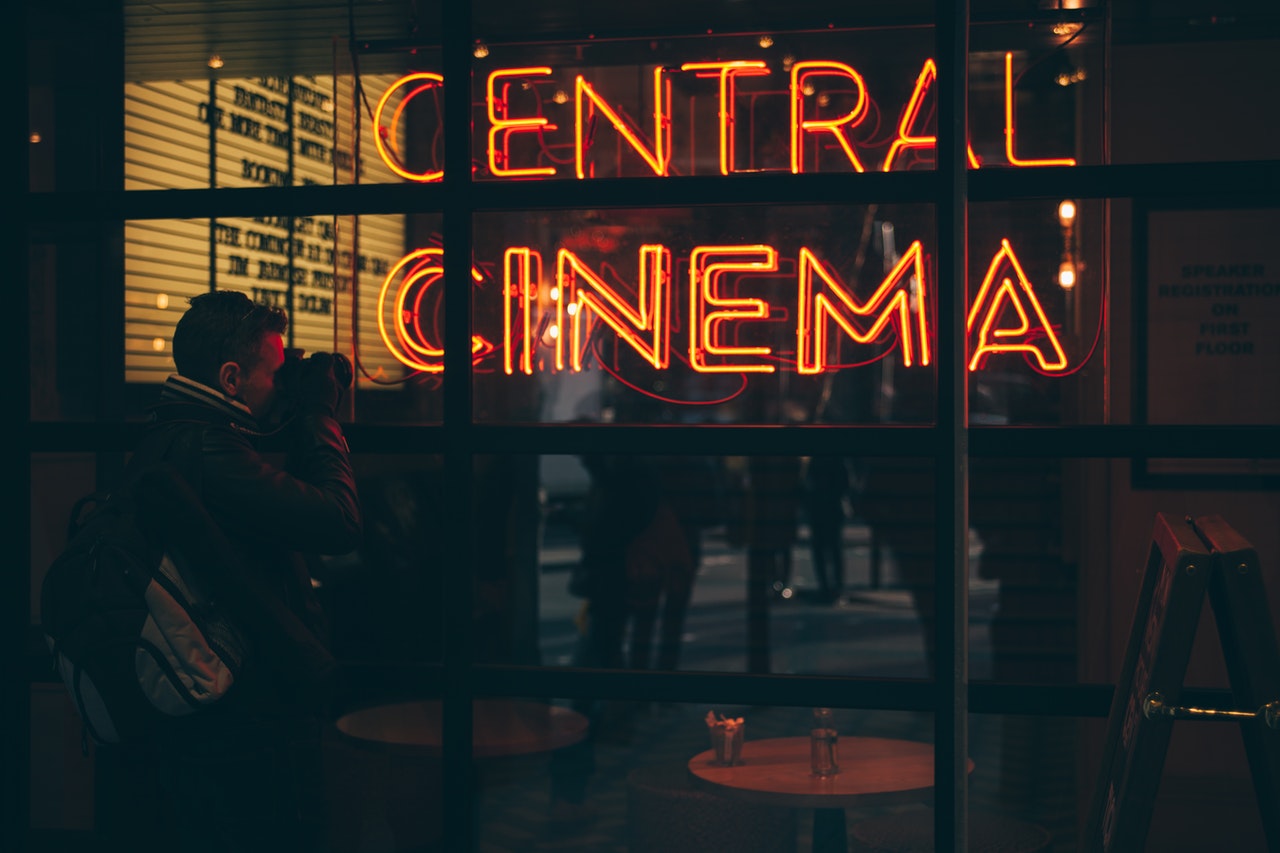Cinema as we know it is changing

Cinema in one form or another has been with us for over a century.
It’s evolved from humble, silent beginnings to a vast, noisy industry with annual box office sales in excess of $40 billion. It may sound impossible that such an industry can find itself threatened, but a perfect storm of three key factors may do just that.
The Big Screen Experience
For many years, one of the great draws of cinema was the whole cinematic experience: huge screens offering detailed pictures, accompanied by high-quality sound systems not found elsewhere. The addition of popcorn, drinks, and snacks added to the experience. Trips to the cinema became social occasions for friends, lovers or families, with parents relaxing as the screen held their children’s attention. But things have changed in the last few years.
Cinema technology is no longer out of reach. Advances in technology now mean huge wall-mounted TV screens are finding their way into homes. Ultra HD and Dolby sound are transforming living rooms across the world, and even if the huge flat screens aren’t quite as big as cinema screens, they certainly make for a comparable experience. They also have the benefit of avoiding queues, and viewings aren’t constrained to start at a certain time. Technology has brought the cinema experience closer to home, and the added convenience is a big plus for many viewers.
New Production Models
 A second key development over recent years is the rise of home streaming services such as Netflix, Amazon, and Apple. From modest beginnings – DVD sales and rentals in the case of Netflix – streaming services began producing original TV serials. Success soon followed there, with Netflix becoming the first streaming platform to be nominated for an Emmy in 2013.
A second key development over recent years is the rise of home streaming services such as Netflix, Amazon, and Apple. From modest beginnings – DVD sales and rentals in the case of Netflix – streaming services began producing original TV serials. Success soon followed there, with Netflix becoming the first streaming platform to be nominated for an Emmy in 2013.
They showed that streaming platforms can make original movies just as well as the major studios, earning the company its first Oscar nomination only a year later.
Since then the streaming giant has gone from strength to strength. At the 92nd Academy Awards, Netflix garnered an impressive 24 nominations, taking their total up to 54 nominations. At the 93rd Academy Awards in early 2021, the number of nominations rose again, this time to 35. It isn’t just nominations though. Netflix have won 15 awards from 89 nominations. They’ve shown that streaming platforms can go toe to toe with the big studios. It’s this pedigree that’s seen them attract big name Hollywood stars such as Al Pacino, Scarlett Johansson, Robert De Niro, and Laura Dern.
 The talent streaming services can attract isn’t just in front of the camera. Only a few short years ago, directors Ridley Scott and Martin Scorsese were lamenting the changing face of cinema, and the public’s taste for franchise superhero movies in particular. Nor were they the only directors. As recently as 2017, Sofia Coppola and Christopher Nolan were urging fans to watch films in cinemas, not on Netflix.
The talent streaming services can attract isn’t just in front of the camera. Only a few short years ago, directors Ridley Scott and Martin Scorsese were lamenting the changing face of cinema, and the public’s taste for franchise superhero movies in particular. Nor were they the only directors. As recently as 2017, Sofia Coppola and Christopher Nolan were urging fans to watch films in cinemas, not on Netflix.
Scorsese’s latest film, The Irishman, was nearly not made as none of the big studios were keen to produce it. It needed a large budget, but had no ‘movie universe’ where multiple sequels could be made, merchandising created and had no avenue where fan loyalties could be pushed into a habit of going to see a row of movies they simply know the name of.
What may sound like a strange twist, in the end, it was Netflix that produced the movie, and showed they have more appetite and vision to create movies that aren’t just fitting into a commercial formula that seems required today to get any type of large(ish) budget movie made for the cinema.
So when even big-name directors and filmmakers are moving on streaming services, like Netflix, it seems that the cinema is never going to return to what it used to be. Also, Netflix may be the most successful of the streaming services, but others such as Apple and Amazon aren’t far behind and are likewise attracting big-name stars to original productions.
The Great Leveller
 The third great threat to the cinema is one nobody foresaw. The global pandemic has affected pretty much every industry, and even Hollywood isn’t immune to its effects. You don’t need to look any further than the repeatedly delayed release of Daniel Craig’s last outing as James Bond, No Time To Die, to see why. With most of the world’s cinemas closed through much of the pandemic, film studios lost a critical source of income. One source, the Hollywood Reporter, predicted losses of $300 million if No Time To Die had been released as planned in April 2020; millions of dollars had already been spent on promotion before the release was delayed.
The third great threat to the cinema is one nobody foresaw. The global pandemic has affected pretty much every industry, and even Hollywood isn’t immune to its effects. You don’t need to look any further than the repeatedly delayed release of Daniel Craig’s last outing as James Bond, No Time To Die, to see why. With most of the world’s cinemas closed through much of the pandemic, film studios lost a critical source of income. One source, the Hollywood Reporter, predicted losses of $300 million if No Time To Die had been released as planned in April 2020; millions of dollars had already been spent on promotion before the release was delayed.
Early predictions back in March 2020 hinted that the global box office could lose US$5 billion as a result of the pandemic. As with so many predictions during the early days of the pandemic, it could well be an underestimation – the Chinese film industry had already lost $2 billion by this time.
Cinema closures during the pandemic undoubtedly affected the film industry, but can also be seen as a magnifying factor, exposing the pre-existing weaknesses in the industry’s structure caused by evolving technology and the rise of streaming services as competition to the major studios. At this stage, it’s impossible to tell how the movie landscape will look a few years from now. One thing is certain though: cinema will be much changed by these three challenges to traditional production models.





[…] makes up a big portion of that Christmassy feeling. Many among us will have uttered the words, “They don’t make films like they used to’ – and it’s true as, sadly, Ephron is no longer around to make them. Ephron mastered the skill […]